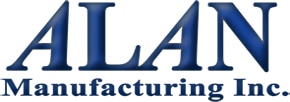The Benefits of Effective Zone Control Systems
Zone control systems consist of air duct dampers that control internal facility climate according to preset temperature settings. These systems separate areas within a facility from each other and maintain unique temperature settings in each area.
Zone control systems incorporate thermostats, electronic dampers, and control panels to maintain smooth operations. Dampers serve as valves that control airflow throughout identified zones. They connect with thermostats, which take accurate temperature measurements of each respective zone. These thermostats send signals through control panels, triggering dampers to either open or close until they achieve the desired temperature.
Thermostats offer versatile functionality as they can integrate with special control features like time delay relays, improving the on- and off-switching controls of a unit. This helps prevent premature wear and tear to HVAC units by providing a three- to five-minute grace period between operating times.
Benefits of Zone Control Systems
Professionally installed zone control systems offer a broad range of long-term advantages. They allow individuals to remotely control temperature settings without interfering with temperatures in other sectors. They also offer even temperature distribution without compromising comfort and ease in the process.
Zone control systems reduce facility climate control costs since the time delay relay allows operators to easily regulate consumption. This process conserves energy by minimizing heat in unnecessary areas and directing it to rooms that require it. Zone control systems also significantly prevent HVAC wear and tear by harnessing atmospheric controls to reduce system usage.
Smart Vents vs. Zone Control Systems
Smart vents use your facility’s air vents to direct airflow to and from unused areas by integrating intelligent detection systems in your facility. This process also determines the air needed to meet target temperatures and can redirect air as needed.
Although smart vents require minimal modification to existing systems, they can’t control air conditioners and furnace units. Smart vents only modulate air already existing in your system, so excess or high-pressure airflow can lead to unexpected pressure changes and duct system leakage.
On the other hand, zone control systems incorporate dampers and thermostats that automatically adjust temperatures across your facility. They also allow better flexibility in controlling the temperatures of independent sections by using zone dampers that channel the conditioned air into preferred zones.
Moreover, zone control systems use programmable thermostats that adapt to seasonal changes, making them more convenient for facilities requiring substantial temperature variations. This aspect provides exceptional comfort and energy savings compared with smart vents.
How to Zone an Existing HVAC System
Zone control systems modify HVAC systems that have easily accessible ductwork. To facilitate zoning, installers strategically place dampers in air ducts to execute open or close controls signaled by control panel thermostats. Altering the thermostat in a specific zone will trigger the control panel, commanding dampers to adjust accordingly and deliver the required temperature for that zone.
In other cases, zoning systems require additional considerations such as air pumps to execute monitoring functions that meet required parameters like air pressure. Bypass dampers relieve high air pressure caused by pressure changes across different zones.
Cost-Efficient Climate Control
To minimize cooling and heating expenses while maximizing comfort and convenience, consider installing a zone control system with Alan Manufacturing Inc. We offer the know-how and passion to achieve the climate control solution that will fit your needs.
We provide excellent zoning solutions to our clients via cutting-edge products that include radio frequency (RF) thermostats and main thermostat controllers, converting heating and cooling concerns into comfort and perfection.
Visit our page to learn more about our line of products and services.


